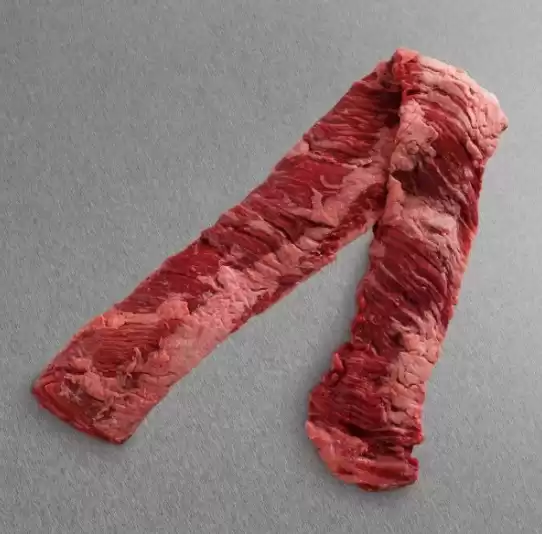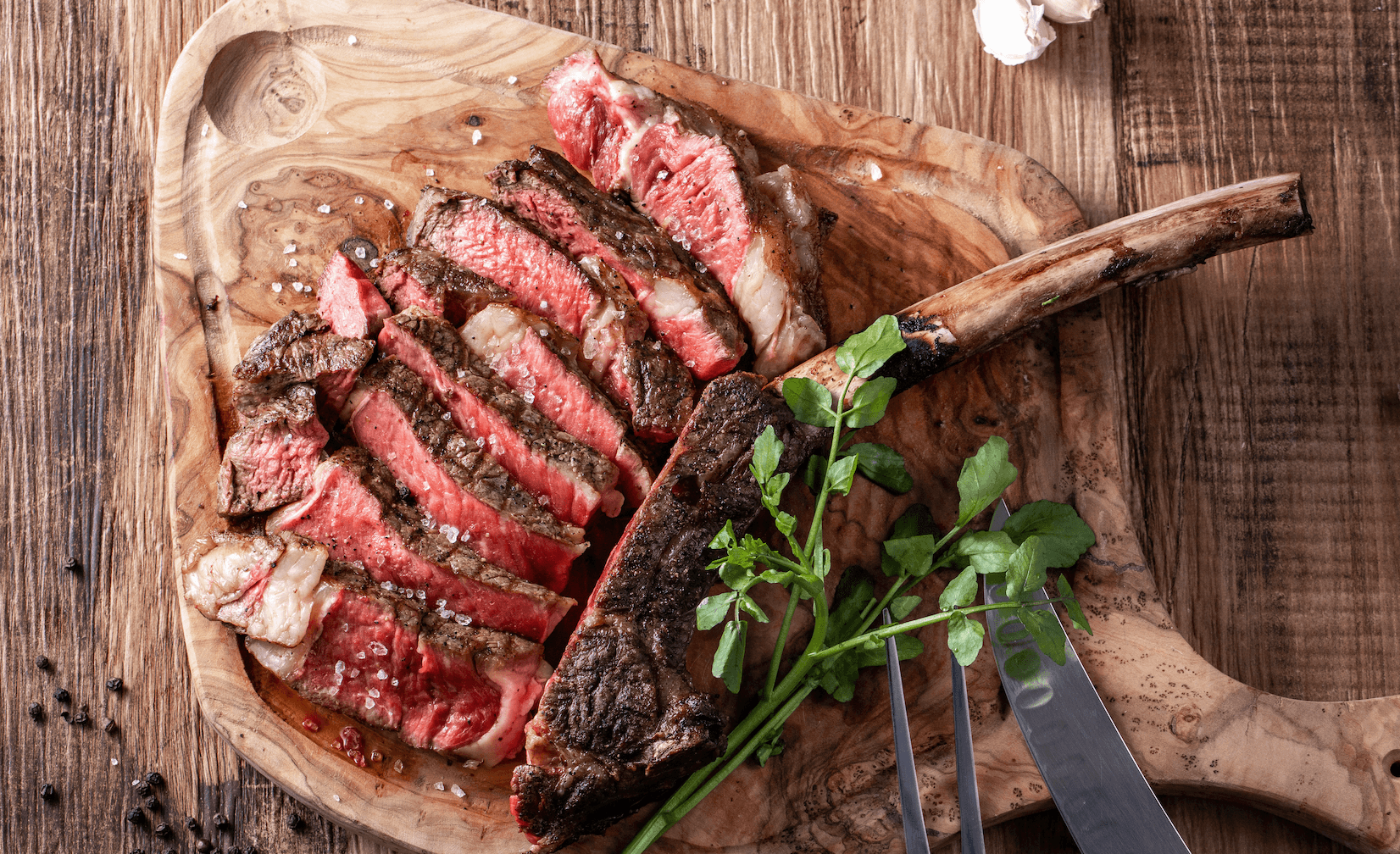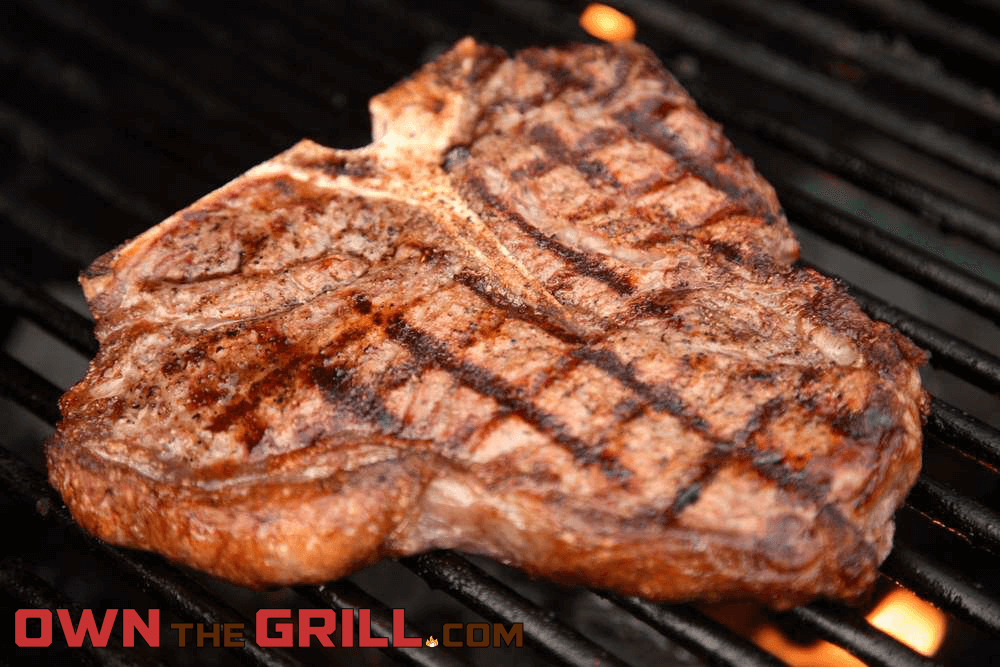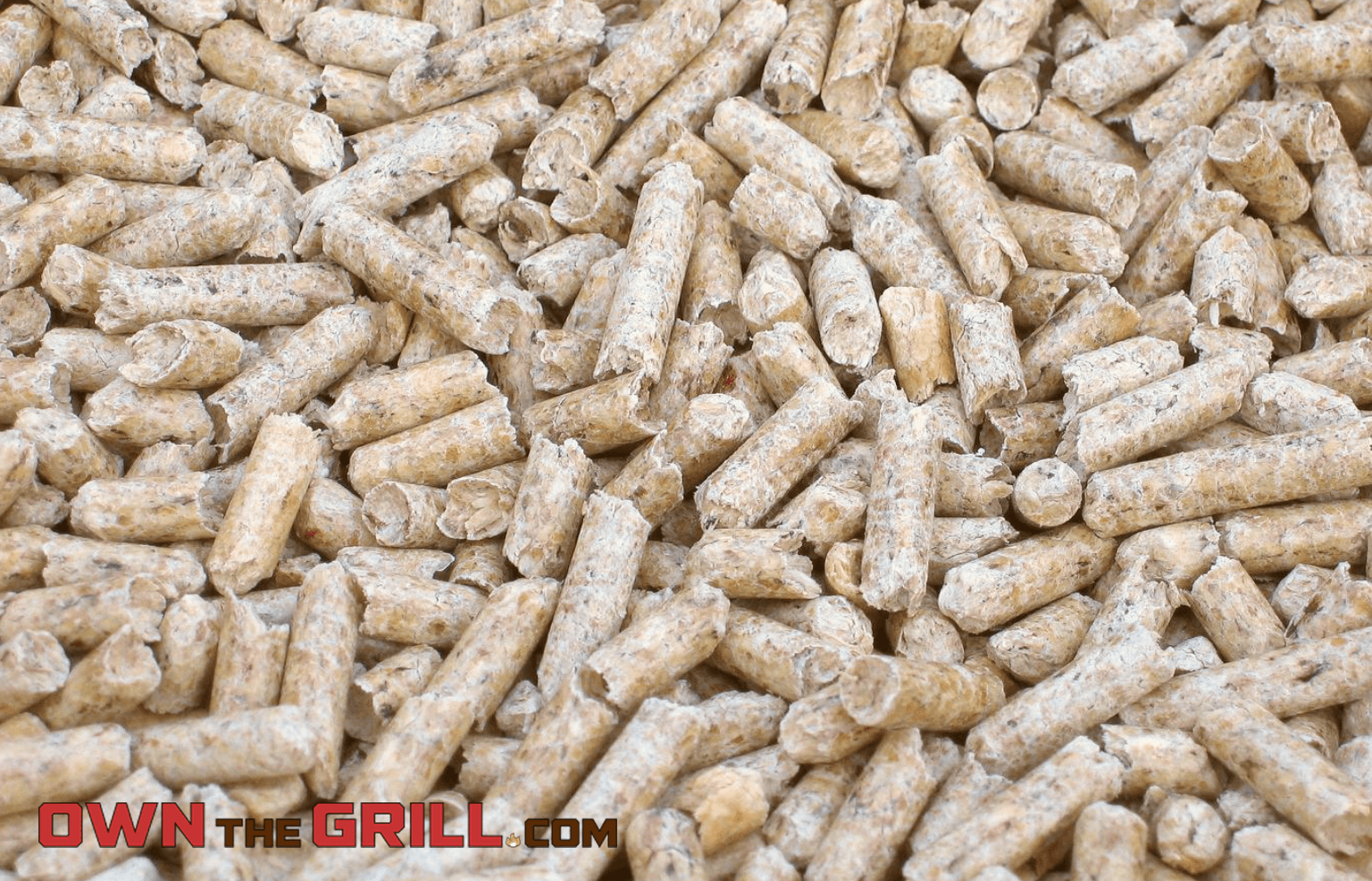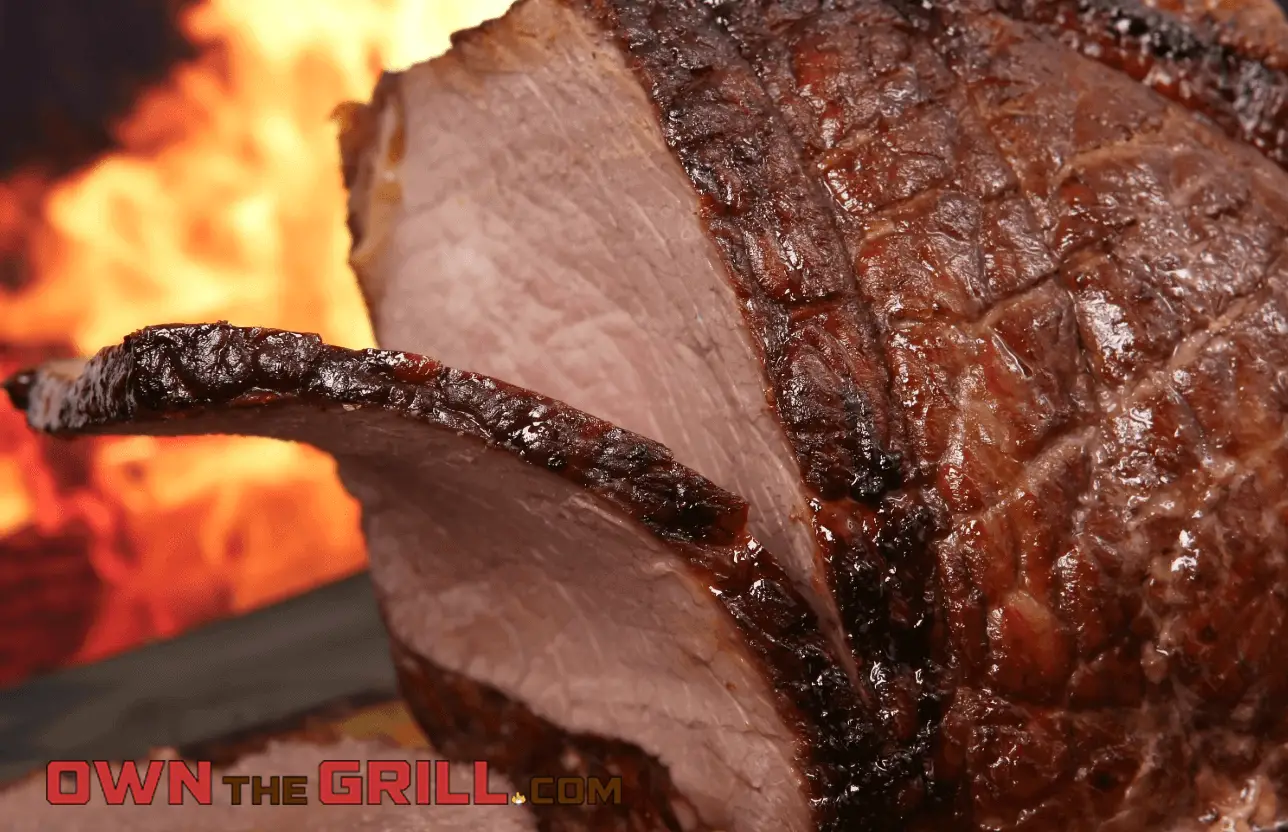This content contains affiliate links. If you make a purchase after clicking a link on this page, we might receive a commission at no cost to you.
In the world of grilling and smoking, there are more than a handful of different types of beef cuts that you could find yourself working with.
Of course there are the popular ones like ribeye, NY strip, prime rib, and T bones – but these cuts only make up a fraction of the beef you could get from the butcher.
In particular, two lesser known but incredibly beefy and delicious cuts are the skirt steak and flank steak. And the best part? On a price per pound basis, they’re typically pretty reasonable for the quality you get.
In this article, we’ve created a complete resource to skirt steak vs flank steak. We’ll go over all of the similarities, differences, how to prepare each, and other tips for getting the most out of your beef.
Skirt Steak vs Flank Steak – Overview
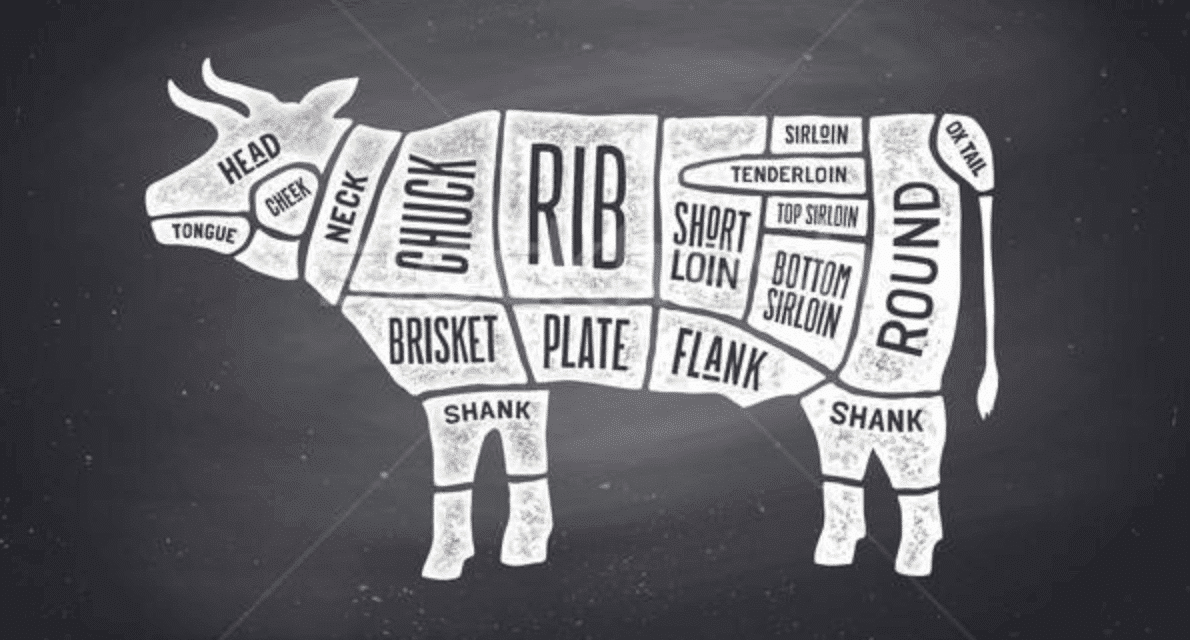
What is Skirt Steak and Where Does It Come From?
Skirt steak is a long and thin cut that comes from the steer’s diaphragm muscle. Specifically, the skirt steak cut comes from muscles inside of the abdominal cavity – which is the section of the animal known as the plate.
This muscle is found under the ribs and is worked thoroughly throughout the life of the steer, so by nature it’s a lean, tough cut.
Skirt steak cuts often have a generous amount of fat throughout and attached to them – which can help greatly to tenderize the meat when it’s on the grill.
Flavor wise, skirt steak is full of beefy flavor that can make for a delicious meal when it’s prepared properly.
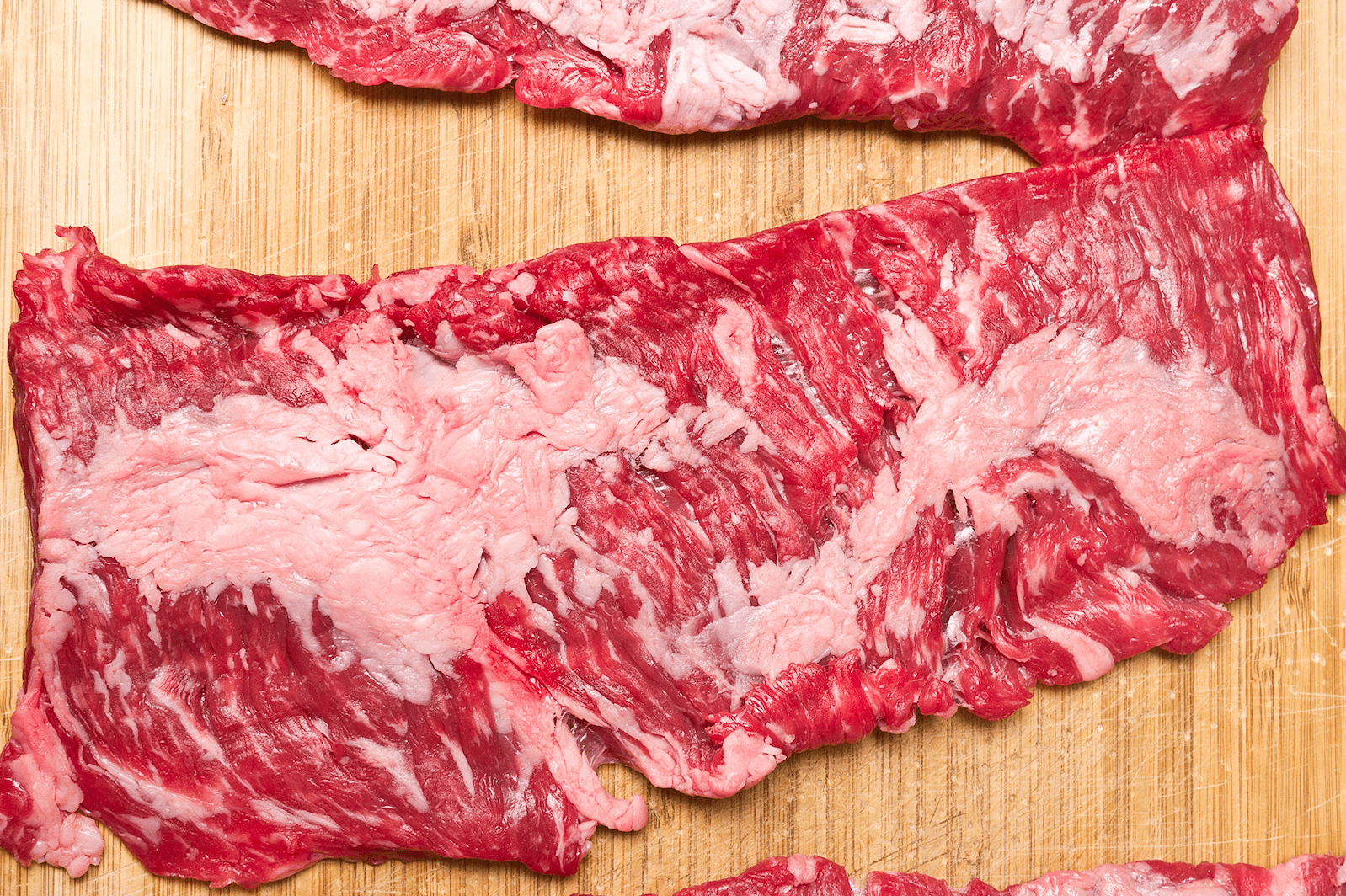
What is Flank Steak and Where Does It Come From?
Flank steak is a thicker, wider, and flatter cut of beef that comes from the flank section of a steer.
The cut also comes from an abdominal muscle that sees a heavy workload throughout the animal’s life – so it’s also lean and tough, especially compared to some other traditional steak cuts like ribeye or filets.
Flank steak handles marinades well and features strong beefy flavors that can be brought out with a little bit of time on the grill.
It also goes by a few other names, which may be common depending on where you live. Flank steak is also referred to as bavette steak in many parts, and you may hear it referred to as London Broil too.
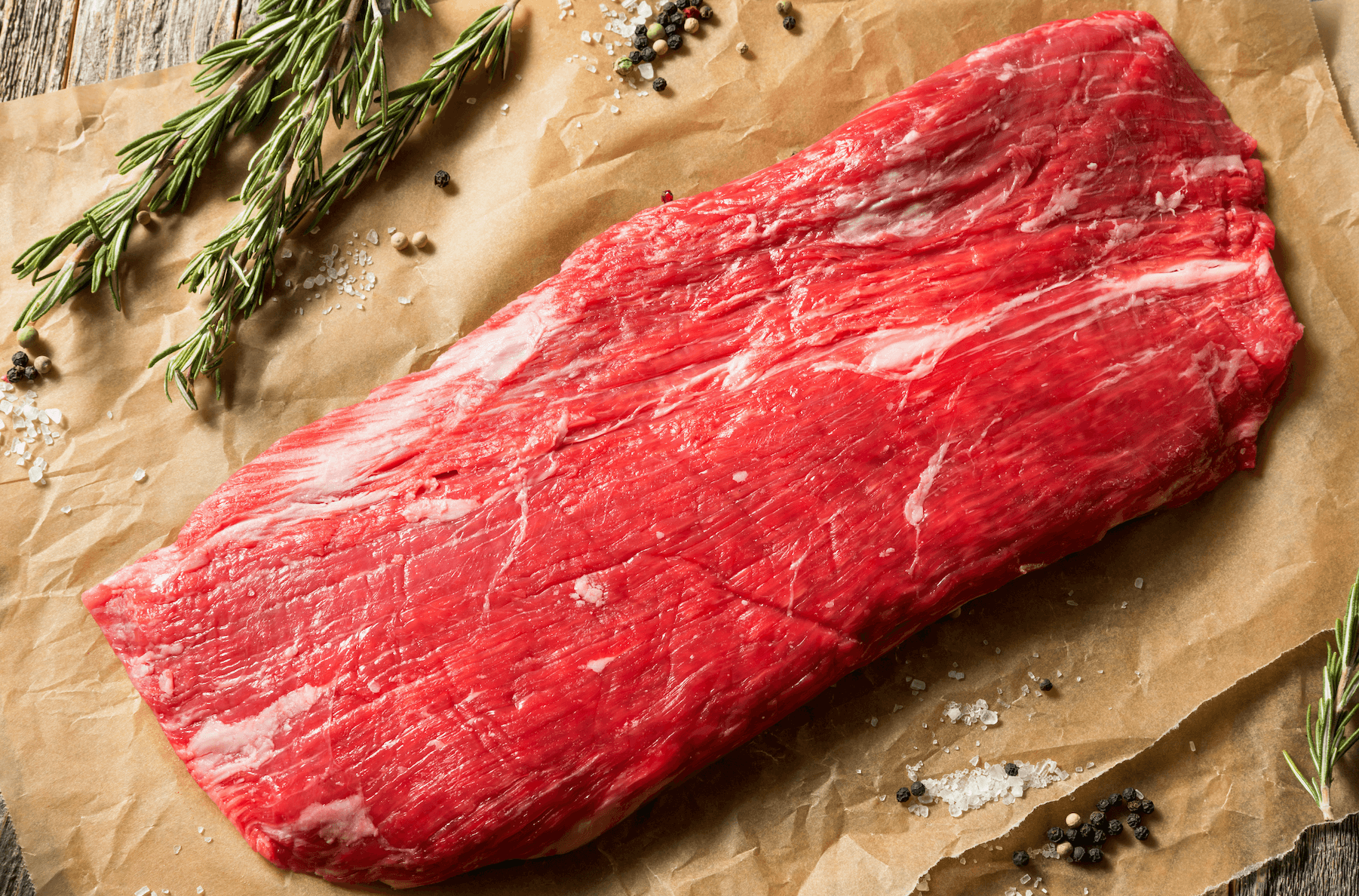
Similarities Between Skirt and Flank Steak
Both skirt steak and flank steak share some similar properties to one another, especially when comparing each to other steak cuts.
In fact, flank is a common substitute for skirt steak, and vice versa! Here is a list of the notable similarities between these two cuts:
- Compared to other steak cuts, both skirt steak and flank steak are relatively tough and lean cuts. Because of this, each is best served medium rare or medium to help keep the results tender and ideal in texture.
- Each of these cuts are strong in beefy flavor. That might sound obvious, but compared to other beef cuts – you can get stronger and more beef forward flavors with a skirt steak or flank steak cut.
- Skirt and flank steak both respond very well to marinades, which can help to not only flavor your food but to tenderize it as well.
- Both of these types of beef cuts are best cooked quickly over high heats. Searing these steaks with high heat for a crispy outer layer while keeping the inside medium rare to medium is ideal. Overcooking either of these cuts will result in an extremely tough and chewy dinner.
- On a price per pound basis, both cuts are extremely affordable compared to other types of beef and steak. You don’t have to break the bank to get a fantastic cut of skirt or flank.
- Each cut has a pronounced muscle grain, which is easy to identify and makes the final preparation of your steaks easier. You always want to slice against the grain with these cuts.
Skirt Steak vs Flank Steak – Differences
While each of these cuts are similar in many regards, there are definitely some distinct differences between skirt steak and flank steak.
- Comparatively speaking, skirt steak has a higher fat content than flank steak. Practically speaking, this means that skirt steak can be a little bit easier to work with. During the cooking process, fat warming and rendering helps to break down the tough muscle fibers and leave you with tender and tasty results. This also makes skirt steak slightly more receptive to marinades than flank steak, even though both receive them quite well.
- Skirt steak is a much thinner cut than flank steak. Because of this, it cooks a little bit quicker and is easier to manage on the grill – especially if you’re cooking on scorching hot temperatures.
- Flavor wise, skirt steak is beefier than flank steak. Skirt steak is also tougher thank flank, so cooking it right and/or combining it with a marinade is crucial.
- Skirt steak is cheaper per pound than flank steak. Both are relatively cheap cuts and a good deal most of the time, but if you’re really pinching pennies then you can get more meat with your dollar going with skirt.
Pro Tip – Cut Against The Grain
For both of these cuts, proper preparation doesn’t end after the steak comes off of the grill.
One of the most important things to get right has to do with how you cut the steak before it’s served. It might not sound like a big deal, but it can be the difference between average results and perfection.
Each of these types of steak have long, skinny fibers of meat that streak throughout the cut. Skirt steak grain runs with the short side of the cut, whereas flank steak grain runs with the long side of the cut.
If you were to slice your beef parallel to that grain direction, you’ll be left with bites that are really tough to breakdown and chew. On the other hand, when you slice against the grain the muscle fibers get broken up, thereby making the steak bites much more tender and easy to chew.
If you want to see the difference for yourself, the next time you fire up a flank or skirt steak, slice one small bite with the grain and one against. Taste them side by side to compare the stark difference in tenderness.
Recipe Ideas for Skirt & Flank
Skirt steaks are best grilled or seared over high heat, and respond very well to marinades and rub seasonings.
Skirt steak is an ideal cut of beef for fajitas (restaurant fajitas come from skirt steak), stir fry, or bulgogi style steak – among other things. It’s also fantastic on it’s own with a homemade rub or alongside chimichurri sauce.
Flank steak is a great alternative or substitute for beef fajitas, and they also make for some fantastic bibimbap tacos. Flank steak is also commonly stuffed and used as a base for carne asada.
Since each of the two cuts are similar in a lot of ways, they can also be used interchangeably in many recipes.
Where to Find Flank & Skirt
Trying to find a skirt steak or a flank steak can be something of a mixed bag.
Many local grocers carry both cuts, but inventory can be spotty from time to time. Sometimes you can show up to a wide selection of skirt and flank, and sometimes you can show up to a beef shelf that doesn’t have either.
If you have a local butcher shop, they’re almost certain to remain in stock of both of these cuts. They’re an easy cut to take from a steer, and they also remain in pretty high demand year round – so most butchers will do their best to keep a few on their shelves.
If you are comfortable ordering beef online, there are some excellent online purveyors of high quality beef out there. Two of our favorites are Certified Piedmontese and Snake River Farms.
Certified Piedmontese offers beef from the Piedmontese breed of cattle, which are known for being incredibly tender for how lean they are. If you prefer beef with less fat but don’t want to sacrifice flavor, they are definitely worth a try.
Snake River Farms on the other hand is one of the top producers of American Wagyu beef in the United States. Their cuts are definitely pricier, but the quality and flavor of their beef is undeniably good. This is a great option if you want to “treat yourself” to some top notch beef.
Snake River Farms American Wagyu outside skirt has a wealth of rich marbling and bastes itself with flavor when cooked. The finished steak has unbelievable beefiness and is extremely juicy.
How Long To Cook Each?
We’ve mentioned that each of these cuts are best prepared with a sear over high temperatures, but how exactly is the best way to do it?
Both skirt and flank steak are very easy to cook, no matter which type of grill you have.
All you need to do is preheat your grill to about 425°F to 450°F. If you have a charcoal grill light your coals with a chimney starter and place them in your grill to preheat.
If you have a gas grill, ignite your burners and set your temperature dials to the appropriate settings. Searing can occur at 350°F or above, but the hotter you run your grill the more prominent your sear will be.
After your grill has reached temperature place your beef on the grates and press down firmly to ensure the entire cut is contacting the grates.
Cooking Skirt
For skirt steak, you might only need to sear for about 1 1/2 minutes per side, depending on how thin your cut is. Flip after 1 1/2 to 2 minutes and sear the other side for 1 1/2 to 2 minutes.
Cooking Flank
The process is the exact same for flank steak, but your cooking times will likely be longer since flank is a thicker cut of beef.
Most times, flank steak cooks for 2 1/2 to 4 minutes per side on the grill for a perfect medium rare sear. Set it on the top rack on low heat for a couple more minutes if you prefer medium doneness.
**Pro tip** let your steak rest for about 5-10 minutes after it comes off of the grill, before slicing. This will allow the moisture to redistribute throughout the cut, and if you don’t allow it to rest, all of the tasty juices will spill out on the cutting board.
Frequently Asked Questions
Can You Substitute Skirt Steak for Flank Steak?
Yes, you can substitute skirt steak for flank steak. There are many similarities between skirt and flank, so in most cases it acts as a suitable replacement
Both cuts are long and thin, and heavily muscled for a leaner texture. They both benefit from being cut against the grain, and they both take well to a marinade.
Flank steaks tend to be cooked quickly over a high heat, and this is also the best way to cook skirt steak. If you’re struggling to get hold of flank steak, then skirt steak is the best substitute.
However, be aware that skirt steak is a tougher meat. This means it shouldn’t be cooked for very long. If you enjoy flank steak well done, then skirt steak isn’t a good substitute. Skirt steak also has a more intense meat flavor, which isn’t preferred by everyone.
Which is Better for Fajitas?
Skirt steak is the traditional cut for fajitas, but flank can work in its place. Skirt steak is better because of how well it marinades.
The fibers in skirt steak aren’t tightly-knit, which allows the marinade and seasoning to penetrate deeper into the cut.
The strong meaty taste of skirt steak is also good, as it holds up to the heavy spicing of fajitas. Fajitas are best cooked with a quick sear over a high heat, which is perfect for the lean meat of skirt steak.
However, flank steak can also be used for fajitas, even if it isn’t as well suited. Flank steak is a more tender cut, but with a closer knit fiber.
This means that while it will hold a marinade, the flavors won’t reach as deep. Flank steak has a less intense flavor, which some prefer.
Which is Cheaper, Skirt Steak or Flank Steak?
Skirt steak tends to be the cheaper cut of meat. Due to the tougher texture, it’s less adaptable for different dishes when compared to the flank steak.
Often, people prefer flank steak because of the tender structure. This allows you to cook flank steak for longer, without it becoming too chewy.
Although skirt steak is cheaper, both cuts are considered to be reasonable in price. There often won’t be much of a difference, especially when compared to the really expensive cuts.
As the cuts come from the working parts of the cow, they tend to be heavily muscled, rather than rich with fat. This is what gives them that tough texture. However, these cuts are also loaded with flavor. Despite being cheaper, there are some recipes that work much better with flank or skirt, instead of a pricey cut such as sirloin.
What is Skirt Steak Called at the Grocery Store?
Skirt steak should be labelled as “skirt steak” at the grocery store. However, it may sometimes be called “fajita steak”. It’s often sold as a long, thin cut of meat, but it may be pre-sliced ready for cooking.
Flank steak is sometimes referred to as “London Broil”, although this is technically the name of a dish, rather than a cut.
It isn’t unusual to find skirt or flank steak at a grocery store, but they aren’t stocked everywhere.
The best place to buy specific cuts of meat is at the butchers. As they tend to receive the entire animal, it’s easier to get large cuts of the leaner meat.
If ordering skirt steak, you may be asked if you prefer “inside skirt” or “outside skirt”. Truthfully, there isn’t much of a difference. Outside is thicker, and inside shrinks more when cooking.
How Long Can Skirt Steak Be Marinated?
Skirt steak and flank steak are ideally marinated for 4 to 12 hours. Skirt steak can be marinated overnight, or for up to 24 hours. Although you can marinate skirt steak for longer, it won’t improve the flavoring, and may break down the meat too much.
As steak marinades, the flavoring penetrates through the fibers of the meat. For tougher cuts, such as flank and skirt, this helps to break down these fibers and tenderize the meat.
The loose knit fibers of the skirt steak makes it the ideal meat for marinating, and the strong beef flavor works well with a range of spices.
Acid is a vital ingredient in a marinade, as this is what breaks the fibers. When the meat is left to marinate for too long, it breaks these fibers too much. Rather than becoming tender, the meat turns mushy.
How Long Does It Take to Grill Skirt Steak?
Skirt steak typically only takes 3 minutes on each side to be grilled. As it’s a thin, but tough, cut, a quick sear is best to lock in flavor without drying out the meat. If skirt steak is cooked too long, it will become very difficult to eat. Cook directly over the grill.
Flank steak is a slightly thicker cut, and will typically take 5 minutes to grill on each side. As a more tender cut, flank can be cooked for longer before it becomes tough. If you prefer steak cooked well done, flank is the better option.
While timing is important, the most crucial element is the temperature of the meat. The internal temperature should be roughly 130F. Use a meat thermometer to check. Adjust cooking times depending on how you like your meat, and the thickness of the cut.
Final Thoughts
If you came in wondering about the differences between skirt steak vs flank steak – I hope you now have a better understanding of what makes these cuts similar and distinct from one another. As far as which is best? There isn’t a clear cut answer, as both are fantastic cuts to work with.
At the end of the day, they’re two lesser known and under appreciated cuts of beef. If you know what to look for and how to prepare them, you’ll be well on your way to grilling some legendary dinners at an affordable price. When cooked and sliced properly, the flavor and texture of flank and skirt steak can stand up to some of the more expensive steak cuts.
And the next time you go out and order beef fajitas, you can know exactly what the pros in the back are working with.
Do you have a favorite skirt steak or flank steak recipe? Which do you think is superior in the skirt steak vs flank steak debate? We’d love to hear your thoughts in the comments section below.


